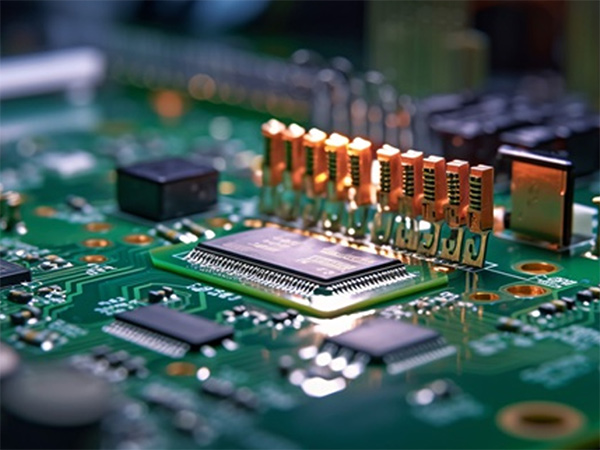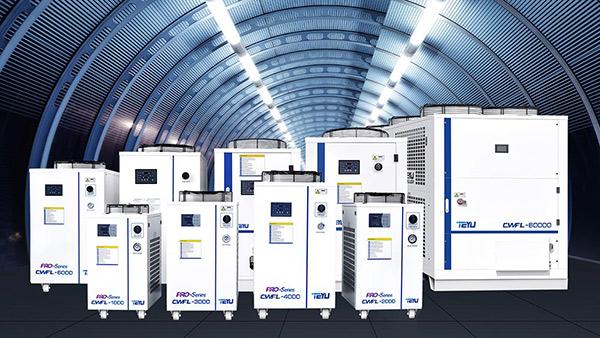በማደግ ላይ ባለው የኤሌክትሮኒክስ ማምረቻ ኢንዱስትሪ ውስጥ፣ Surface Mount Technology (SMT) አስፈላጊ ነው። እንደ የውሃ ማቀዝቀዣዎች ባሉ ማቀዝቀዣ መሳሪያዎች የሚጠበቁ ጥብቅ የሙቀት እና የእርጥበት መቆጣጠሪያዎች, ቀልጣፋ አሰራርን ያረጋግጣሉ እና ጉድለቶችን ይከላከላሉ. SMT አፈጻጸምን፣ ቅልጥፍናን ያሳድጋል፣ እና ወጪዎችን እና የአካባቢ ተፅእኖን ይቀንሳል፣ በኤሌክትሮኒክስ ማምረቻ ውስጥ ለወደፊት እድገቶች ማዕከላዊ ሆኖ ይቀራል።
Surface Mount Technology (SMT) እና በምርት አከባቢዎች ውስጥ ያለው አተገባበር
ዛሬ በፍጥነት በማደግ ላይ ባለው የኤሌክትሮኒክስ ማምረቻ ኢንዱስትሪ፣ Surface Mount Technology (SMT) ወሳኝ ሚና ይጫወታል። የኤስኤምቲ ቴክኖሎጂ የኤሌክትሮኒካዊ ክፍሎችን በትክክል ወደ የታተሙ ሰርክ ቦርዶች (ፒሲቢዎች) ማስቀመጥን ያካትታል ይህም የኤሌክትሮኒክስ ምርቶችን አነስተኛነት፣ ቀላል ክብደት እና የተሻሻለ አፈፃፀምን ብቻ ሳይሆን የምርት ዋጋን በመቀነስ የምርት አስተማማኝነትን እና የአምራችነት ቅልጥፍናን በእጅጉ አሻሽሏል።

የ SMT ወለል መጫኛ መሰረታዊ ሂደት
የኤስኤምቲ ወለል የመትከል ሂደት ትክክለኛ እና ቀልጣፋ ነው፣ በርካታ ቁልፍ ደረጃዎችን ያካትታል፡
የሽያጭ ለጥፍ ማተም፡- ለትክክለኛ አካል ወለል መጫኛ ለማዘጋጀት በፒሲቢው ላይ በልዩ ፓድ ላይ የሽያጭ መለጠፍን መቀባት።
ክፍል ማፈናጠጥ፡- የኤሌክትሮኒካዊ ክፍሎችን በሽያጭ በተለጠፉ ንጣፎች ላይ ለማስቀመጥ ከፍተኛ ትክክለኛነት ያለው የገጽታ መጫኛ ስርዓትን በመጠቀም።
እንደገና የሚፈስስ ብየዳ ፡ የኤሌክትሮኒካዊ ክፍሎችን ከ PCB ጋር በጥብቅ ለማገናኘት የሽያጭ ማጣበቂያውን እንደገና በሚፈስስ ምድጃ ውስጥ በሞቃት የአየር ዝውውር ማቅለጥ።
አውቶሜትድ ኦፕቲካል ኢንስፔክሽን (AOI)፡- AOI ማሽኖች የተሸጠውን PCB ጥራት ይፈትሹ እንደ የተሳሳቱ ክፍሎች፣ የጎደሉ ክፍሎች ወይም የተገላቢጦሽ።
የኤክስሬይ ፍተሻ፡- በቦል ግሪድ ድርድር (BGA) ማሸጊያ ላይ ያሉ የተደበቁ የሽያጭ ማያያዣዎችን በጥልቅ የጥራት ቁጥጥር ለማድረግ የኤክስሬይ መመርመሪያ መሳሪያዎችን መጠቀም።
በምርት አካባቢዎች ውስጥ የሙቀት መቆጣጠሪያ መስፈርቶች
የ SMT የማምረቻ መስመሮች በስራ ቦታ ላይ ለሙቀት እና እርጥበት ጥብቅ ደረጃዎች አሏቸው. የሙቀት ቁጥጥር የመሣሪያዎች መረጋጋት እና የመሸጫ ጥራትን ለመጠበቅ በተለይም ከፍተኛ ሙቀት ባለባቸው አካባቢዎች ወሳኝ ነው፡-
የመሳሪያዎች የሙቀት መቆጣጠሪያ ፡ የኤስኤምቲ መሳሪያዎች፣ በተለይም የገጽታ መጫኛ ስርዓቶች እና እንደገና የሚፈሱ መጋገሪያዎች፣ በሚሰሩበት ጊዜ ከፍተኛ ሙቀት ያመነጫሉ። ትክክለኛው የማቀዝቀዣ መሳሪያዎች ከመጠን በላይ ሙቀትን ይከላከላል እና የማያቋርጥ የተረጋጋ አሠራር ያረጋግጣል.
ልዩ የሂደት መስፈርቶች- የማቀዝቀዣ መሳሪያዎች ለሙቀት-ነክ አካላት ወይም ለተወሰኑ የሽያጭ ዘዴዎች አስፈላጊውን ዝቅተኛ የሙቀት መጠን ለመጠበቅ ይረዳል.
የማቀዝቀዝ መሳሪያዎች እንደ የኢንዱስትሪ የውሃ ማቀዝቀዣዎች የምርት መስመሮችን ቀልጣፋ አሠራር ለማስቀጠል, የሽያጭ ጉድለቶችን ለመከላከል ወይም ከመጠን በላይ በሆነ የሙቀት መጠን ምክንያት የሚፈጠር የአፈፃፀም ውድቀትን ለመከላከል አስፈላጊ ናቸው.

የ SMT Surface mounting የአካባቢ ጥቅሞች
የኤስኤምቲ ቴክኖሎጂ በማምረት ሂደት ውስጥ አነስተኛ ቆሻሻዎችን ያመነጫል, ይህም እንደገና ጥቅም ላይ ሊውል እና ለማስወገድ ቀላል ነው. ይህ የኤስኤምቲ ማቀነባበሪያ ቴክኖሎጂ ለአካባቢ ተስማሚ እና ኃይል ቆጣቢ ያደርገዋል። በዛሬው ዓለም አቀፋዊ ትኩረት ለአካባቢ ጥበቃ እና ዘላቂ ልማት፣ የኤስኤምቲ ቴክኖሎጂ ቀስ በቀስ በኤሌክትሮኒክስ ማምረቻ ኢንዱስትሪ ውስጥ ተመራጭ ሂደት እየሆነ ነው።
የኤስኤምቲ ወለል ተራራ ቴክኖሎጂ ከኤሌክትሮኒክስ ማምረቻ ኢንዱስትሪ እድገት ጀርባ አንቀሳቃሽ ኃይል ነው። የኤሌክትሮኒካዊ ምርቶችን አፈፃፀም እና የምርት ቅልጥፍናን ከማሳደግ በተጨማሪ የማምረቻ ወጪዎችን ለመቀነስ እና የአካባቢ ተፅእኖን ለመቀነስ አስተዋፅኦ ያደርጋል. በመካሄድ ላይ ባሉ የቴክኖሎጂ እድገቶች፣ የኤስኤምቲ ወለል መገጣጠም በወደፊት የኤሌክትሮኒክስ ማምረቻ ውስጥ ዋናውን ሚና መጫወቱን ይቀጥላል።

እኛን በሚፈልጉበት ጊዜ ለእርስዎ እዚህ ነን።
እባክዎ እኛን ለማግኘት ቅጹን ይሙሉ፣ እና እርስዎን ለመርዳት ደስተኞች ነን።









































































































